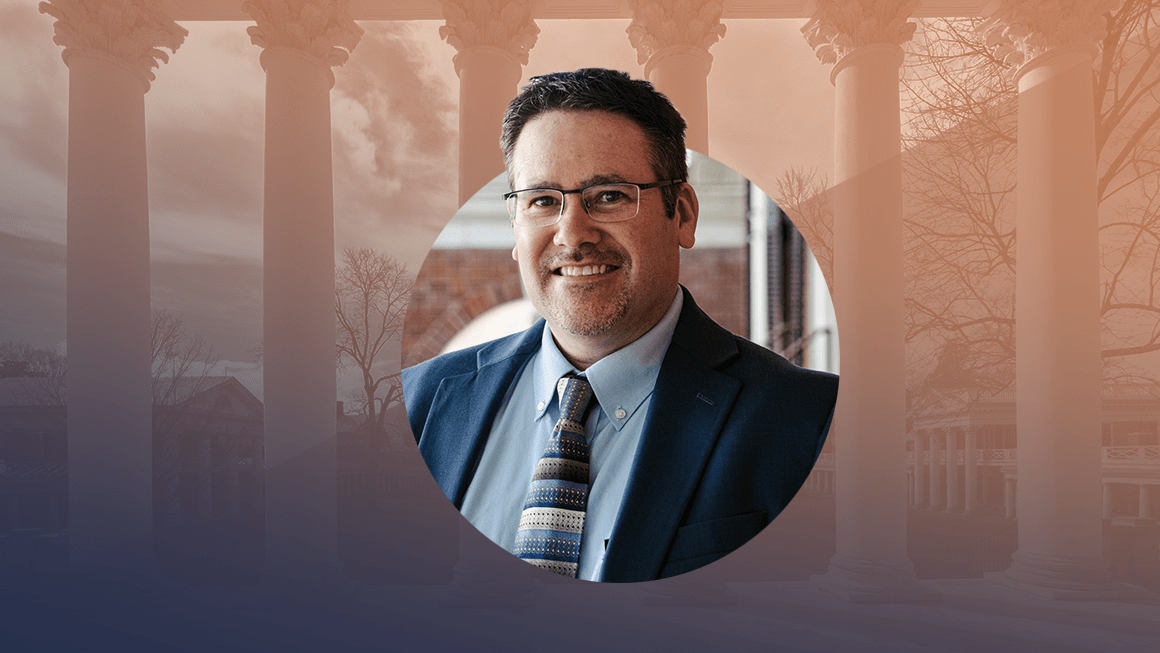
Six Pillar Practices Every Teacher Should Know
A new book co-edited by special education professor Michael Kennedy features six pillar practices teachers can utilize to support all their students, including students with disabilities.
Illustration by Julia Parlette-Carino.
Students with disabilities regularly learn alongside their peers in settings designed for all students. Special education professor Michael Kennedy co-edited the second volume of High-Leverage Practices for Students with Disabilities, a book that aims to describe six practices teachers can use to support all of their students, including those who require extra support.
High-leverage practices, a concept first created by researchers at the University of Michigan, are series of fundamental actions teachers use frequently and when done well, can make a positive impact on their students’ learning.
“The education field said, let's select a small number of key practices that every teacher ought to have, whether they are emerging from their teacher preparation program, or are already in the field,” said Michael Kennedy, professor at the UVA School of Education and Human Development. “Then special education leaders said we should do this, too, but specifically for teachers who support students with disabilities. This can include general and special educators, and other specialists.”
Kennedy has spent his career developing high-leverage practices or HLPs for special education teachers, including developing a robust video library.
The new edition of High-Leverage Practices for Students with Disabilities features two significant changes: It reframes the somewhat long original list of 22 HLPs to six pillar practices, and the rest are now referred to as embedded practices. Next, there is a sharpened focus that these HLPs should be in the toolbelt of all teachers.
From Special Education to Students with Disabilities
Renaming the volume from High-Leverage Practices for Special Education to High-Leverage Practices for Students with Disabilities marked far more than a title change. It represents the reality that students with disabilities are taught all across schools, including in general education classrooms.
“Almost all students with disabilities spend at least some of their day if not all of their day in the general ed classroom being taught by gen ed teachers and other professionals,” Kennedy said. “Children don't always respond in predictable ways to the education structures we have built. Many do. But many don't.
“And that's why we need high leverage practices for students with disabilities so those students who need that extra support can have educators who recognize those differences and recognize the appropriate set of interventions that can support them.”
Kennedy and his team also expanded the discussion of HLPs for all students, giving specific attention to the cultural, linguistic, and other needs of students, including those with disabilities, English language learners, and other students who struggle.
“In this new addition, we really went out of our way to think about and make as clear as possible a lens towards thinking about the unique individuality of students,” Kennedy said. “We talk about issues of race, gender, age, residency, and all of the possible characteristics that should be considered by educators, as they're thinking about the implementation of these HLPs.”
Six Pillars
Reframing the initial list of 22 practices was initiated, in part, by questions Kennedy received from teacher education programs and school districts around the country.
“They would call—and I got asked this all the time—if you had to pick four or five of these practices, which ones would you pick?” Kennedy said. “They would have limited resources and limited time—maybe only a day or two of professional development—and want to know what to focus on.”
Kennedy’s answer was almost always the same.
“Let’s do explicit instruction, feedback, collaboration, and using data to make decisions because if you have a teacher that can do some of those basic things, you have a good foundation and can build out from there.
The team ultimately identified six pillar practices:
- Collaborate with professionals to increase student success.
- Collaborate with families to support student learning and secure needed services.
- Use student assessment data, analyze instructional practices, and make necessary adjustments that improve student outcomes.
- Establish a consistent, organized, and responsive learning environment.
- Use explicit instruction.
- Provide intensive instruction for academics and behavior.
The remaining practices, now called embedded practices, fall under one of the six pillars.
Kennedy warns, however, to not think of these as individual, stand-alone practices.
“There is tremendous overlap in these pillar practices,” he said. “For example, you can’t make data-based decisions without collaborating with colleagues to make sure that the right people are at the table, collaborating with families, to make sure family input has been received, because you don’t have the right data to do it with.”
The pillars also provide a model for school districts and teacher preparation programs to perform their own self-exploration and self-discovery to identify areas in which they are strong and other areas where they may need to work on.
Ultimately, the book is for educators–-including those in teacher preparation programs–-to plan how the six pillar practices can be taught to educators of all levels to facilitate their eventual automatic implementation.
“There are so many critical practices and pedagogies for teachers to learn in shrinking amounts of teacher preparation and professional development,” Kennedy said. “We simply cannot teach educators all they need to know in the available time. Therefore, by prioritizing a small number of truly high-leverage practices, we can arm our colleagues with powerful practices that help get them rolling in a positive direction.”
Once those practices are in place, Kennedy and his team encourage teachers to add embedded practices as well that will round out a teacher’s practice.
STORMED Research Lab
Professor Kennedy and colleagues are conducting research, including on HLPs, in their lab, Supporting Teachers Through Coaching, Observations, and Multimedia to Educate Students with Disabilities.
News Information
Media Contact
Audrey Breen
